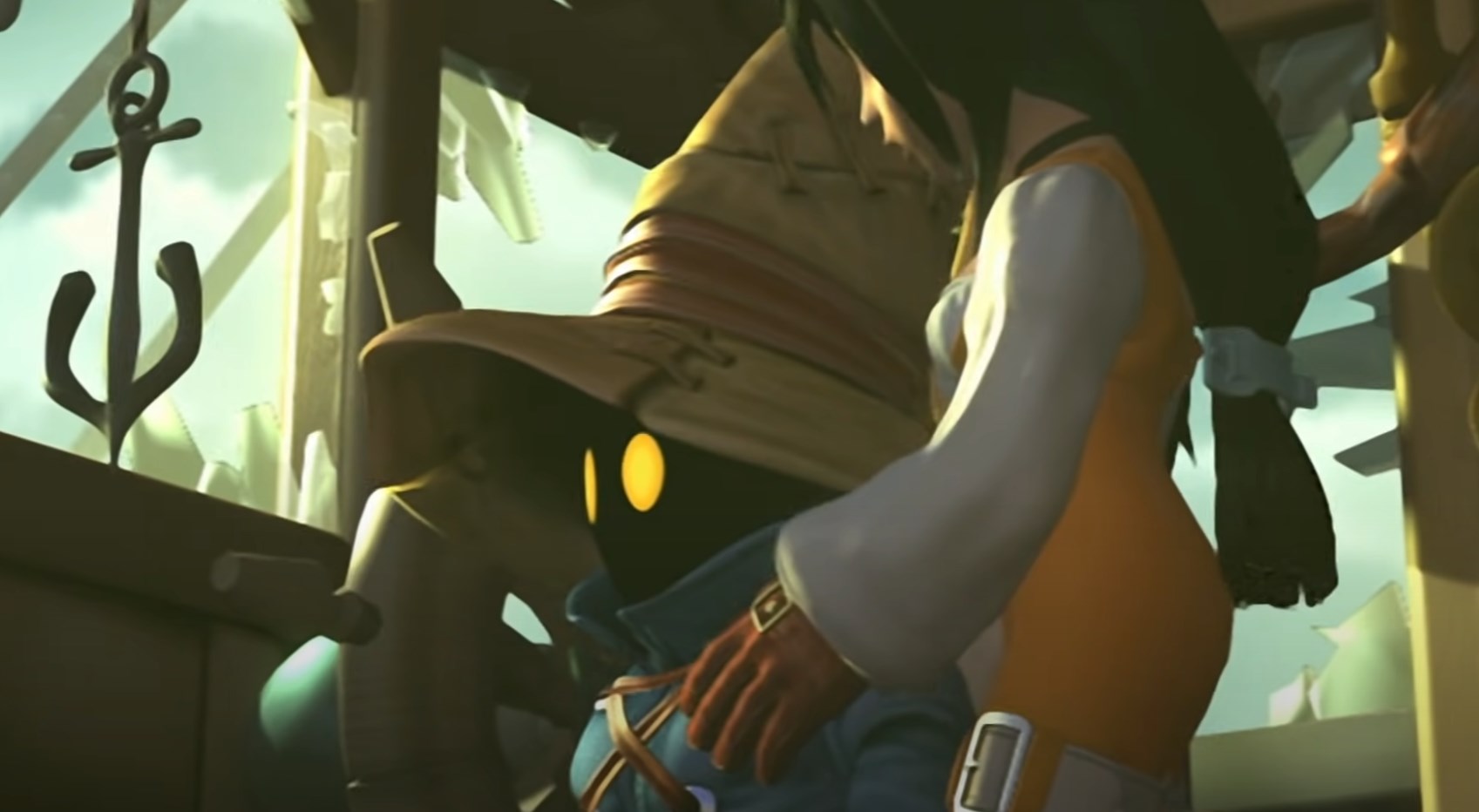Editor’s note: this piece contains spoilers for Final Fantasy IX
In 2000, venerated RPG developer Square kicked off the new year with a big announcement: Final Fantasy was going back to its roots. After two games featuring high-tech weaponry, corrupt megacorporations, and sci-fi boarding schools, the beloved franchise was finally returning to the European fairy tale aesthetic of its foundational 8- and 16-bit titles.
And, sure enough, when Final Fantasy IX came out, all the classic elements were there. The game takes place in a steampunk-tinged fantasy world and features a cast of whimsical characters. Elemental crystals, the Final Fantasy series’ recurring McGuffin, were back. So were moogles, dwarves, and — most importantly — black mages.

Nothing showed Square’s commitment to Final Fantasy IX‘s back-to-basics approach more than Vivi Ornitier. After all, black mages have been part of Final Fantasy since the beginning and still serve as the de facto symbol of the series’ earliest days. In Final Fantasy, Final Fantasy III, and Final Fantasy V, the black mage is one of a few classes (or “jobs”) you can assign to your characters, trading their physical strength for the ability to cast powerful spells. In Final Fantasy II and Final Fantasy IV, black mages live in their own city, Mysidia; during the first few minutes of IV, the protagonist slaughters Mysidia’s robed residents and steals their crystal.
Vivi even looks like the black mages of old, big head and all. The mages’ shadowy faces and glowing eyes might have been byproducts of the Nintendo Entertainment System’s limited palette, but their design is evocative and instantly memorable. It’s no wonder that they became Final Fantasy‘s first major mascots.
But neither Vivi nor Final Fantasy IX are exactly what they seem. In an unusual move, Square unveiled Final Fantasy IX alongside its two sequels. Final Fantasy X, due out a year later, was the franchise’s first installment on the then-brand-new PlayStation 2, and featured a new combat system, more realistic graphics, and a world inspired by Southeast Asia. Final Fantasy XI was an MMORPG in the vein of Ultima Online and EverQuest, with gameplay to match. The 2001 feature film Final Fantasy: Spirits Within told an alien invasion story.
In other words, Final Fantasy IX wasn’t a revival. It was a eulogy for Final Fantasy‘s classic era, and Vivi was there to help us say goodbye.
Endings — and what comes afterwards — are baked into Final Fantasy IX‘s premise. “Following the death of my mother, I went through some things that made me think about death,” franchise creator and Final Fantasy IX producer Hironobu Sakaguchi said, according to Third Editions’ The Legend of Final Fantasy IX. “In the end, I told myself that this sort of thing is really not so unusual. In spite of the sadness it brings, life goes on.”
It’s probably not an accident that Sakaguchi uses Vivi, Final Fantasy IX‘s most direct link to the franchise’s earlier installments, to express this theme, and the mage’s arc serves as a potent metaphor for the fate of the original Final Fantasy games. Initially, Vivi is clumsy, naïve, and ignorant about his true nature, but he means well and tries hard. As the adventure continues, he learns that he’s actually a product, one of hundreds of black mages produced on an assembly line for use in war. Even worse, Vivi was born with a built-in expiration date. After about a year of puttering around, he discovers, black mages simply stop working.

Vivi spends the rest of Final Fantasy IX making peace with his impending demise. He succeeds, but time catches up with him anyway. During Final Fantasy IX’s epilogue, Vivi is the only cast member who’s absent. He is not, however, forgotten; a message written by mage before his death plays over the final scenes. “Life doesn’t last forever,” it says. “Even if you say goodbye, you’ll always be in our hearts … Farewell. My memories will be part of the sky.”
Unlike Vivi, Final Fantasy didn’t die after Final Fantasy IX, but it did change radically. Nobuo Uematsu is no longer the series’ sole (or even primary) composer. Sakaguchi is long gone. The Active Time Battle system, which powered Final Fantasy IV through IX‘s turn-based combat, has been retired.
And yet, like Vivi’s memory, those original titles’ influence remains. The first six Final Fantasy games have been remastered, remade, and re-released numerous times. They continue to provide a barometer for Final Fantasy‘s overall vibe, while the creatures, mechanics, and tropes they introduced — including black mages — have been remixed and reinterpreted repeatedly in later installments. Even when a Final Fantasy title tries something radically new, it still feels comfortable, thanks to the foundation those old games established.
Final Fantasy IX foresaw this eventuality, of course. While Vivi doesn’t make it to the epilogue, a group of young black mages who claim to be his sons do. The message is clear: Vivi will be missed, but his death isn’t sad, exactly. His time was simply up; now, seeing how his descendants pick up his legacy will be its own, unique source of joy. You can say the exact same thing about classic Final Fantasy.





